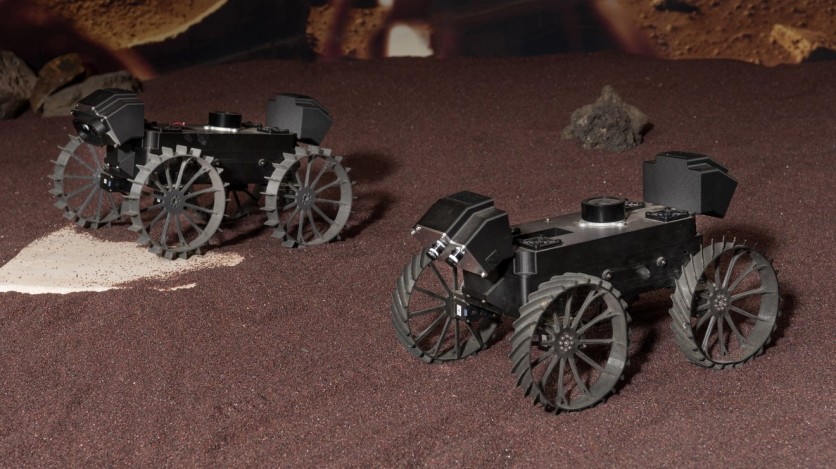NASA is embarking on an exciting new mission that involves sending three tiny rovers, each the size of a carry-on bag, to explore the moon's surface.
These mini rovers will be part of the Cooperative Autonomous Distributed Robotic Exploration (CADRE) project, an experiment to showcase the capabilities of new technology and demonstrate the potential of autonomous robots to enhance future space missions.

The CADRE Project of NASA
The CADRE project aims to demonstrate that a network of mobile robots can work together effectively without human intervention, paving the way for more efficient and collaborative exploration in space.
These rovers will be delivered to the moon's Reiner Gamma region as part of NASA's Commercial Lunar Payload Services (CLPS) initiative, scheduled to arrive in 2024.
What sets this mission apart is its emphasis on autonomy. While mission controllers on Earth provide a general directive, the rovers themselves will elect a leader and allocate tasks among each other to accomplish their collective mission.
This significant level of autonomy empowers them to make decisions independently, such as coordinating their movements, avoiding obstacles, and mapping the lunar surface with 3D images using stereo cameras.
Furthermore, CADRE's objective includes assessing the rovers' adaptability in the face of technical challenges. The successful execution of this experiment will highlight the potential of multi-robot missions, particularly in navigating complex and scientifically important terrains.
Although the primary focus of CADRE is not scientific research, the rovers will carry multistatic ground-penetrating radars. By driving in formation and using the reflections of radio signals from each other, they will generate a 3D image of the subsurface up to 33 feet below the lunar surface.
This approach allows them to collect more comprehensive data compared to traditional ground-penetrating radar systems.
Read Also : NASA Pours $5.7 Million Into Developing Space Telescopes Designed to Look for Life on Exoplanets
Rovers Set for a Daunting Task
The rovers will also face the daunting task of surviving the extreme thermal environment on the moon's equator. With daytime temperatures soaring up to 237 degrees Fahrenheit (114 Celsius), they must be robust, compact, and lightweight.
The CADRE team designed a clever solution to this challenge - 30-minute wake-sleep cycles. The rovers will power down every half-hour to cool off and recharge their batteries. Upon waking, they will exchange health status information and elect a leader for the next mission phase.
The CADRE project represents a remarkable step forward in the development of autonomous robotic exploration in space. By demonstrating the potential of cooperative and intelligent rovers, NASA is laying the foundation for more sophisticated and efficient missions in the future.
"Our mission is to demonstrate that a network of a mobile robots can cooperate to accomplish a task without human intervention - autonomously," said Subha Comandur, the CADRE project manager at NASA's Jet Propulsion Laboratory in Southern California.
Comandur added: "It could change how we do exploration in the future. The question for future missions will become: 'How many rovers do we send, and what will they do together?'"
Related Article : NASA Temporarily Loses Contact with Voyager 2 that's Almost 20B km Away-Why is it Not a Concern?

ⓒ 2025 TECHTIMES.com All rights reserved. Do not reproduce without permission.




